by Aoife Donnellan // Oct. 17, 2023
Marina Abramović is once again making history this autumn in London with the opening of two very different shows. The Marina Abramović Institute (MAI)—home to the Abramović Method and a place of learning and support for performance artists exploring long durational work—took over the Southbank Centre’s Queen Elizabeth Hall from October 4th to 8th, while across the river in the Royal Academy (RA) a retrospective of her life’s work is on show. The RA exhibition marks the first time the institution has hosted a retrospective of a female artist in its 255 year history. Abramović’s opera project, ‘7 Deaths of Maria Callas,’ which appeared in Berlin in 2022, also opens at the English National Opera this November. Both the takeover and the retrospective illustrate why after 50 years, Abramović continues to be the definitive voice on durational performance art.
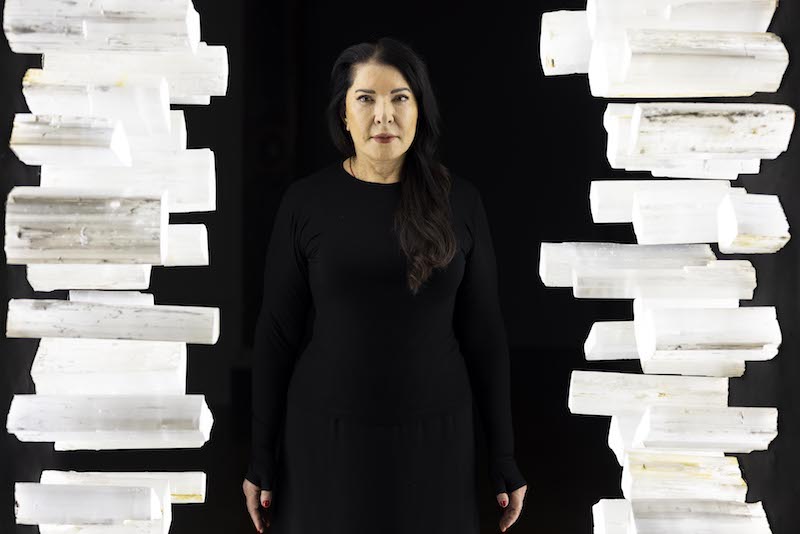
Marina Abramović in her solo exhibition at the Royal Academy of Arts, London, from 23 September 2023 – 1 January 2024 // © Marina Abramović, photo © Royal Academy of Arts, London / David Parry
On the opening night of the Southbank takeover, the atmosphere is filled with nervous anticipation. The evening begins with a talk from Abramović herself in the Queen Elizabeth Hall Auditorium, with an introduction from Mark Ball, the artistic director of the Southbank Centre. A simple, “and now, Marina” brings the renowned performer on stage to speak for an hour about the performances the audience is about to see. Her comedic instinct is surprising, adding “okay, this is self-promotion” before a note about the work that MAI does. She speaks knowingly about each performer, frequently using words like “fragile” and “strong” to describe the conceptual inspirations of different works. While the audience listened to Abramović speak in the auditorium, performers appeared in dressing rooms, green rooms, technical spaces and the foyer, preparing for the visitors to reappear. When the talk is over, the audience is invited to leave the auditorium to discover 11 performances scattered throughout the venue.
Abramović’s role at Southbank is that of a curator. She has chosen work from past students that represent a commitment to her beliefs about durational performance. These site-specific works engage with endurance, intentionality and participation. The artists featured on October 4th were Collective Absentia, Carla Adra, Cassils, Paula Garcia, Miles Greenberg, Sandra Johnston, Carlos Martiel, Yiannis Pappas, Paul Setúbal, Aleksandar Timotic and Despina Zacharopoulou.
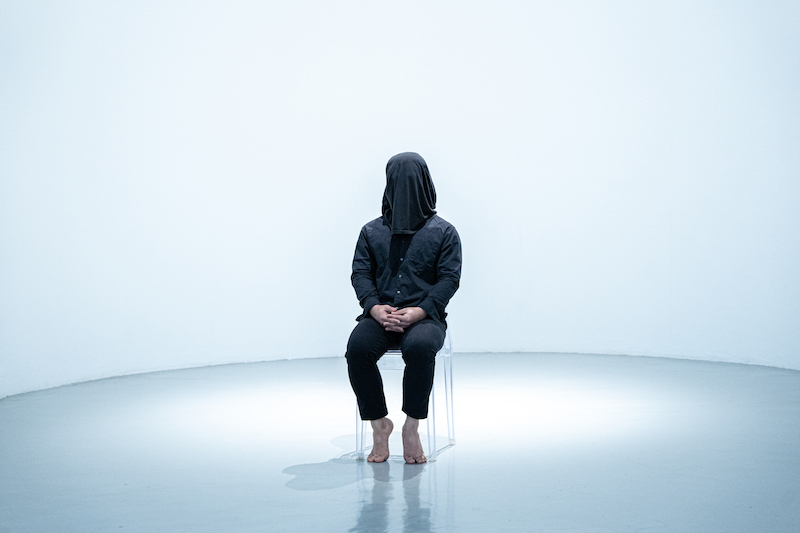
Collective Absentia: ‘Again and Again,’ 2022 // Courtesy of the Bangkok Art Biennale and the artist
The first sight visible as audiences depart the auditorium for the foyer is ‘Our Glorious Past Our Glorious Present Our Glorious Future: 19482023’ (2011) by Collective Absentia. A man sits upright in a chair with a hood covering his head, and for the next four and a half hours, he does not move. The work explores the post-colonial history of Burma/Myanmar using the unidentifiable performing body to examine the agency of individual artists in contemporary society. This nonviolent resistance aims to illustrate the political history of Burma/Myanmar without reenacting explicit forms of violence.
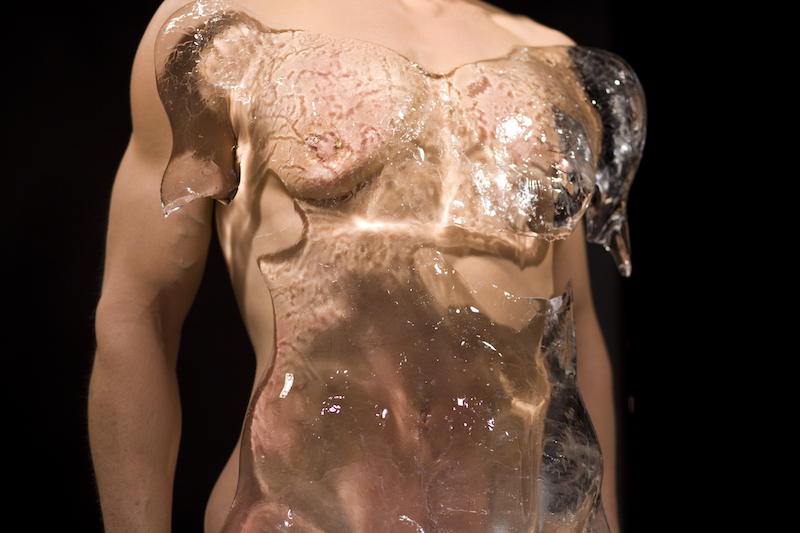
Cassils: ‘Tiresias,’ 2011 // Photo by Clover Leary
On the Purcell Room stage, the performer Cassils’ naked body appears shielded by a block of ice that has been carved into the neoclassical Greek form of a male torso. Their work, ‘Tiresias’ (2011), is based on the blind prophet of Thebes who is transformed from a man into a woman for seven years. Over the course of four and a half hours, Cassils’ body heat melts the ice sculpture, dissolving the division between performer and object. Downstairs in a bunker-like room, Sandra Johnston sits performing ‘Shutter’ (2023), which is the most quietly compelling performance of the evening. Johnston moves slowly from a plastic chair to the tiled floor, turning a small rock over in her fingertips, and mind, taking in every angle and shifting her body accordingly. The work unfolds over four hours, considering the interdependence of movements and power structures.
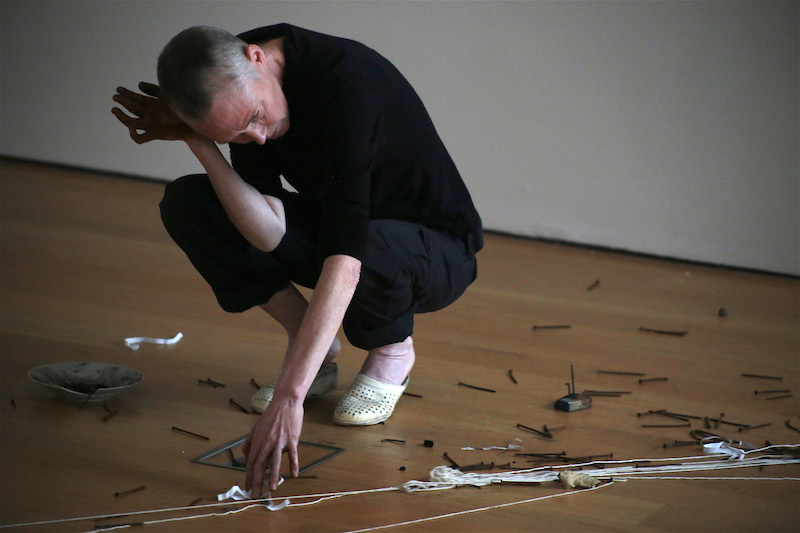
Sandra Johnston: ‘Avert/Avow,’ 2022, collaborative performance with Alastair MacLennan as part of 100 Years of Self-determination, curated by Joanne Mullan, commissioned by IMMA, Dublin // Photo by Fergus Kelly
The difference between the MAI takeover and the RA retrospective is marked. The historic architecture of the RA adds to the fossilised feeling of an archive of work that has been created over 50 years. The artist is not present, instead her image follows visitors between rooms, switching focus between her screaming face, still body and meditative mind. The opening work from Abramović, ‘The Spirit in Any Condition Does Not Burn’ (2011), appears in red vinyl in the entryway, setting the tone for the rest of the exhibition. Each of the 13 rooms unpacks a period of her life and work, beginning with a video restaging of ‘The Artist is Present’ (2009), with footage from the original performance. This is followed by archival images and footage from ‘Rhythm 0’ (1974), accompanied by a table that is laid out with the objects that appear in the piece. Among them are an axe, bread, honey, knives, wine, and the infamous gun. A distressing sound of wailing from another room carries through each room, giving an uneasy atmosphere to more peaceful works.
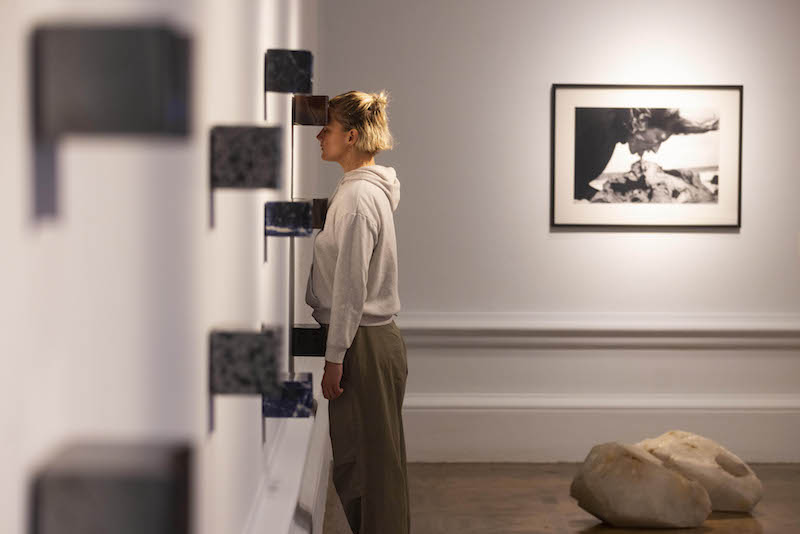
‘Marina Abramović,’ 2023, installation view of exhibition at the Royal Academy of Arts, London, from 23 September 2023 – 1 January 2024 // © Marina Abramović, photo © Royal Academy of Arts, London / David Parry
Her dedication to documentation is evident. Next to images of each of Abramović’s performances sit short reports where she recounts her activities. In her early works, each time an audience member intervenes to save her life in a performance that has gone awry she notes, “the performance is interrupted.”
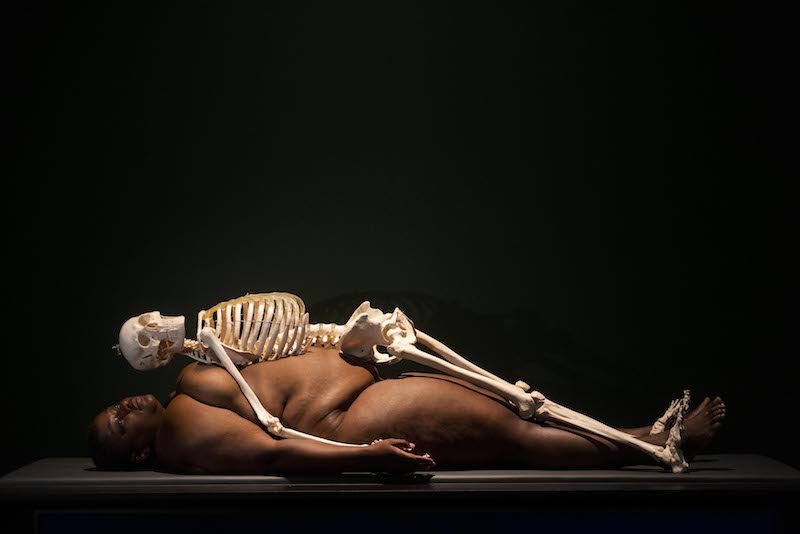
‘Nude with Skeleton,’ 2002/2005/2023, live performance by Madinah Farhannah Thompson, 2 hours // Courtesy of the Marina Abramović Archives, and Galerie Krinzinger, © Marina Abramović, photo © Royal Academy of Arts, London / David Parry
Throughout, there are live performances and opportunities to engage with works, including restagings of ‘Imponderabilia’ (1977/2023), ‘Nude with Skeleton’ (2002/2005/2023), ‘The House with the Ocean View’ (2002) and ‘Luminosity’ (1997/2023). The rushed experience of walking through the nude entryway in ‘Imponderabilia’ only dissipates after walking through Abramović’s crystal doorway ‘Portal’ (2022). One of Abramović’s ‘Transitory Objects,’ ‘Red Dragon’ (1989), is on show, inviting visitors to lay their foreheads on rose quartz that is set against oxidised copper.
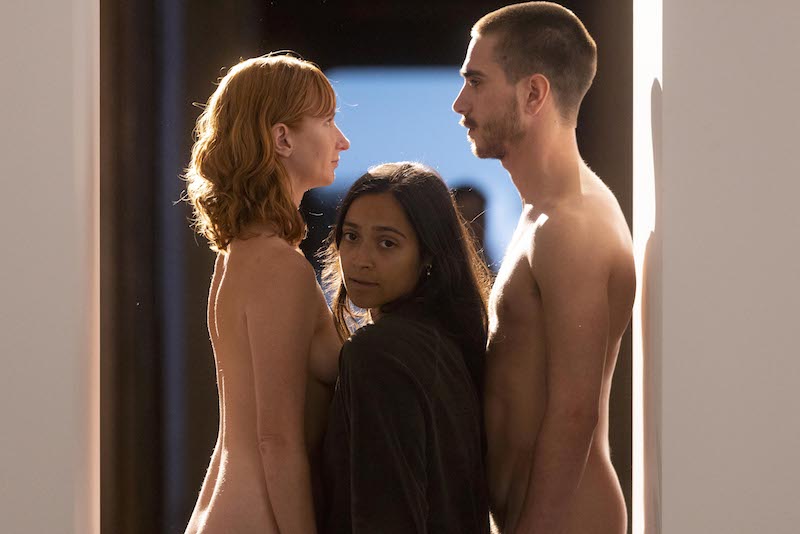
‘Imponderabilia,’ 1977/2023, live performance by Emma Fisher and Duarte Melo, 60 minutes, installation view of ‘Marina Abramović’ at the Royal Academy of Arts // Courtesy of the Marina Abramović Archives, © Marina Abramović, photo © David Parry/ Royal Academy of Arts
Taking in Abramović’s life’s work illuminates her journey from seeking a meditative state through pain, to finding it through intentional presence. The retrospective sits between a visual exhibition and a personal archive, as Abramović’s primary subject is herself. While some of the urgency of the work might be lost in the RA show, her energy and dedication appears without reservation in the Southbank Centre takeover. Together, the shows compliment one another, bringing to light Abramović’s immeasurable influence on contemporary durational performance art.
Artist Info
Exhibition Info
Southbank Centre
‘Marina Abramović Institute Takeover’
Exhibition: Oct. 4–8, 2023
southbankcentre.co.uk
Southbank Centre, Belvedere Road, London SE1 8XX, click here for map
Royal Academy
‘Marina Abramović’
Exhibition: Sept. 23, 2023–Jan. 1, 2024
royalacademy.org.uk
Burlington House, Piccadilly, London W1J 0BD, United Kingdom, click here for map
























